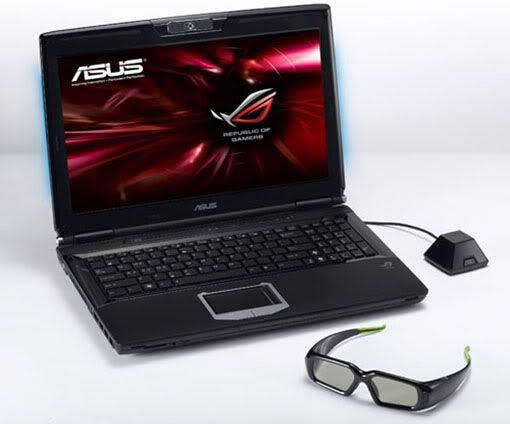1.5 Budget Matters too
Small budget (less than 1000 $)
- Use non-playful (office, internet, pictures, video playback )
For small budgets who want a machine in 15 inches for the office and surf, the Samsung R530 I7P-31X is especially noteworthy for its quality and attractive price (Intel Celeron Dual-Core T3100 2GB 250GB 15.6 "LED Burner DVD Wireless N Webcam Windows 7 Premium from 600 $). Along the same lines include also the Dell Vostro 3500 (Intel Core i3-330M 2.13GHz / 2GB / 250GB / LED15.6 / DVDRW / Win 7 Home Premium ) from 600 $ HT in Dell and normally targeted at small businesses, but individuals can buy it without proof. Quality-performance/prix The report of the Dell Vostro is very interesting, most components can be improved choosing options (more powerful processors, larger hard drive, more memory, etc.).. There is also a 17-inch version is good value for money, the Dell Vostro 3700 (Intel Core i3-330M 2.13GHz / 2GB / 250GB / LED17.3 / DVDRW / Win 7 Home Premium) and models of smaller sizes as the Vostro V13 (Intel Celeron 743 1.2GHz / 2GB / 250GB / LED13.3 / 7 Pro Win).
Always for the office, surfing, photos and video, but more powerful than the above models (slightly more powerful processor, more memory and hard disk a little bigger) while remaining in low price (less than 700 $ ), the ASUS-K50IJ SX264V (Intel Pentium Dual-Core T4400 4GB 320GB 15.6 "LCD DVD Writer Wi-Fi N Webcam Windows 7 Premium 64-bit) is a robust, simple and efficient. In addition it has two year warranty as most machines manufactured by Asus.
- Recreational use (office, internet, pictures, video playback, video games, 3D application ...)
For quite good performance in 3D games, while remaining within reasonable prices, we must turn to models with powerful graphics cards. For example towards the Toshiba Satellite l670-14E (330M-i3 Intel Core 4GB 500GB 17.3 "LED DVD Writer Wi-Fi N Webcam Windows 7 Premium) with a Mobility Radeon HD 5650 around 900 dollars which is good for the game 17 inches. Always 17 inches, the Dell Studio 17 (Intel Core i3-330M 2.13GHz / 4GB / 500GB / LED17.3 / DVDRW / Win 7 Home Premium) is an excellent model for a versatile multimedia and games.
- Netbooks (e-mail, internet, office light)
In this price range, a new class of machines rather special is growing strongly since late 2007, it already accounts for 20% of mobile phone sales: these are netbooks. These phones are designed for ultra mobility: they are very light (less than 1 kg), small (<12 inches), not very successful and sold at attractive prices, typically between 200 and 650 dollars (or even less taking advantage of a bundled with a subscription to a 3G phone operator).
Average budget ( $ 1000 - $ 1600)
- Use non-playful (office, internet, pictures, video playback)
For non-gamers, Dell offers the excellent Dell Latitude E5500 (Intel Core 2 Duo P8600 2.4GHz / 2048MB / 160GB / TFT15.4 / DVDRW / Win Vista Business), 15-inch high enough quality, very suitable for those who looking for a workhorse for non playful and / or professional. In large (17 inches) include the ASUS-N71JQ TY024V (Intel Core i7-720QM 4GB 28.1 TB (2x 640GB) 17.3 "LED Blu-ray / DVD Writer Wi-Fi N / Bluetooth Webcam Windows 7 Premium 64-bit 2-year manufacturer warranty) which is a very powerful machine with Intel Core i7-720QM.
- Recreational use (office, internet, pictures, video playback, video games, 3D application)
For those seeking a multimedia machine with a large screen comfortably include the Dell XPS Studio 16 (Core i5 520M 2.40GHz / 4GB / 500GB / LED15.6 / DVDRW / Win 7 Home Premium) sizes 16 inches and have intermediate Radeon HD 4670 with a performance for newer games. For the game by 15 inches, include the MSI GT640-023 (Intel Core i7 720QM 4GB 500GB 15.4 "LCD DVD Writer Wi-Fi N / Bluetooth Webcam Windows 7 Premium) with integrated GeForce GTS 250M.
At 17 inches, include the MSI GX740-075 (Intel Core i5-430M 2.26GHz / 4GB / 500GB / TFT17 / DVDRW / Win 7 Home Premium) and the very powerful and large (18 inches) Toshiba Qosmio X500-12Q (Intel Core i7-720QM 4GB 640GB 18.4 "LCD DVD Burner Wi-Fi N / Bluetooth Webcam Windows 7 Premium 64-bit).
High budget (over $ 16000)
For gamers, 17 inches, the ASUS-G73JH SZ050V (Intel Core i7-720QM 1.6GHz / 8GB / 640GB / LED15.6 / BD / Win 7 Home Premium) with a GeForce GTS 360M for a price around 1800 euros great for the players. Like the ASUS-G73JH TY098V (Intel Core i5-520M 4GB 1TB (2x 500GB) 17.3 "LED DVD Writer Wi-Fi N / Bluetooth Webcam Windows 7 Premium 64-bit) for gamers on a budget scarcely less important (ATI Mobility Radeon HD 5870 and Core i5).
Another example is the excellent and high-end Dell Alienware m15x sold from 1650 $ depending on options and Alienware M17x (from 2100 $ ), it is assuredly a must for players, it is roughly the same laptop the world's most powerful for the game.




 Reply With Quote
Reply With Quote

Bookmarks